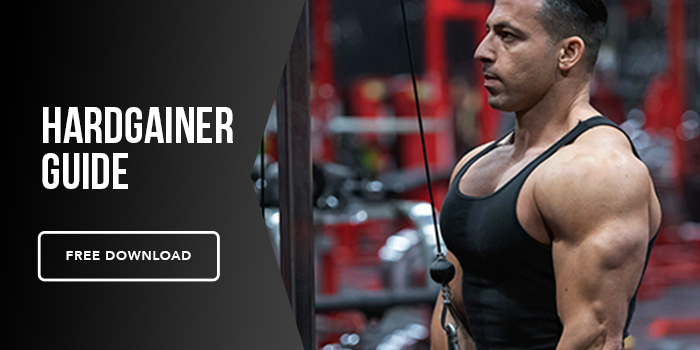So you are interested in weight lifting but not sure how to go about it. You see all the other guys and girls in the gym doing all types of exercises at all types of weight. How do you know what weight to choose? Today I’d like to answer that question so you feel 100% comfortable going into the gym and appropriately choosing the right weight to make progress safely.
Why Can’t I Just Jump In and Guess?
It’s kind of like a Goldilocks situation. If you choose a weight that's too heavy (especially if you are new), you risk causing an injury which will take you out of the gym for a long time, or you choose a weight that’s too light stopping far earlier each set than you are capable of. While that is a very safe way to train, your body needs a progressively larger and larger stimulus in order to keep growing. For weightlifting there is also an actual threshold that needs to be stimulated on the muscle in order for the signal to be strong enough to grow.
The science shows most of the muscle fiber gets recruited when it is placed under a load that allows you to complete 6-8 repetitions.
Higher than 6-8 reps - That doesn’t mean you can’t use a lighter loading percentage (or heavier for that matter), but if you do, you just have to make sure you complete enough reps to exhaust the muscle to a point that those same amounts of fibers have been recruited. So you’ll have to do more work. The downside to this is it increases your overall work volume, so you may run the risk of “junk sets” which essentially means you aren’t exerting enough effort on each subsequent set, because you’ve tired yourself out.
Lower than 6-8 reps - On the flip side, if you are doing less weight, you will obviously recruit the maximum muscle fibers, but you are also putting yourself at a much higher risk for injury since you are so close to your limit. You also tax your central nervous system a whole lot more under these heavy loads, so doing too much may systemically overload your system, not allowing you to recover in time for your next session.
As a beginner, you are going to start out lighter as you begin to figure out your proper weight. Using compound movements, you will eventually be moving an amount of weight you aren’t used to so you want to make sure your form is the TOP priority.
How to Pick The Right Weight
- Figure Out Your Sets and Rep Range
You can choose everything from 3-5 reps, 6-8, 10-12, 12-15, and so on. Don’t get caught up in the ranges. Ideally implementing all of them at some point in your program is all that matters. At Mind Pump, we generally recommend sticking with 1 or 2 rep ranges for a 4-6 week cycle and then moving onto another. For example, I would say keep your compound lifts at 3-5 reps, and the more isolating movements at 6-8 for a cycle. After a deload, then try 6-8 reps for your compounds then 10-12 for your isolating movements. Each rep range stimulates different growth aspects of the muscle so they are all valuable in their own way. Start with 2-3 sets per exercise. Again, as a beginner, don’t throw more volume (sets) than you need to stimulate growth. Since this is a fresh new stimulus a beginner only needs 8-10 TOTAL WEEKLY sets per muscle group. That’s 8-10 sets for chest, back, and so on respectively.
- Find Your 3 Rep Max or a Weight That is 3 Reps in Reserve (RIR)
Some coaches are fans of working at percentages of your max. They feel this helps ensure you are always working relatively at the appropriate load for your skill level. I feel this isn’t always accurate because life gets in the way. Your 80% of your 3RM might be say 135lbs, but if you didn’t get enough sleep, or feeling sluggish that day in the gym, that weight could feel like your 1RM.
I prefer finding your 3 RIR. That is, if you are doing 3 sets of 6-8 for squats, find a weight that allows you to complete 8 reps but feeling like you had maybe 2-3 reps left in the tank. That allows you to keep form in check, while still creating an optimal stimulus. If you are able to hit all 3 sets for 8 reps at that 3 RIR, then next week go up 5-10lbs. When you are no longer able to hit 8 reps (and hit the lower end of that range at 6 reps), then stick with that weight till you are able to hit all sets for 8 reps. Then go up 5-10lbs.
- Choose The Appropriate Weekly Volume
As mentioned before, a beginner only needs 8-10 sets PER muscle per week to grow. Any more is overkill and won’t speed up your gains. The traditional bodybuilding way was to do a body part split and complete lets say all 10 sets of your leg work on one day. What the research has found is that splitting that work up into 2-3 days during the week allows you to complete more work (because you will be more fresh spreading the workload for a given muscle) versus trying to do it all in one day when you’ll be getting more tired.
Splitting it up also gives you 2-3 chances to send a muscle growing signal to that body part. When we workout, a muscle building signal is spiked each time we train that body part. If you only do a body part split that gives you only 1 day of the week to maximally stimulate that muscle. After 24-48 hours the signal comes back to baseline. Why not split it over 2-3 days and keep that signal spiked all week?
For a beginner a full body routine would work best for this allowing all muscles to be stimulated over the course of those 2-3 workouts.
- Appropriate Rest Times
Give yourself ample time to recover from each set. It might feel easy the first week, but trust me, as the weeks go on and you keep adding 5lbs, you need to give your body time to recover to be able to complete the set. I recommend 2-5 minutes rest in between sets. That gives you enough time for the muscle to recover and be fresh for the next set. Remember, your goal is to maximize how much stimulation you can get on the muscle to send a signal to grow, not burn the maximum amount of calories or be out of breath for the sake of saying you worked hard.
- When to Deload
Finally, will come the deload. When you hit a point where you’ve been hopefully adding 5-10lbs each week, you may notice that it starts to slow down. If you hit two weeks in a row where you are not able to either do one more rep, or 5lbs heavier than the week before, it’s time to deload. Your body has hit its maximum recoverable volume and needs a break to catch up to the last 4-6 weeks of stimulation you’ve put it under.
After 4-6 weeks, take one week as a deload, where you are still going to the gym, and still doing the same exercises, but at HALF the sets, reps, and weight. So if you finished your final week at 200lbs for 4 sets of 10 reps, now do 100lbs, for 2 sets at 5 reps during your deload. This allows you to still get a little stimulation but allowing your body to have the week to still repair as it needs to. After your deload week, you can go right back to your program and maybe try 2 new rep ranges and start over again.






